Jiaxuan Chen
CareCom: Generative Image Composition with Calibrated Reference Features
Nov 14, 2025Abstract:Image composition aims to seamlessly insert foreground object into background. Despite the huge progress in generative image composition, the existing methods are still struggling with simultaneous detail preservation and foreground pose/view adjustment. To address this issue, we extend the existing generative composition model to multi-reference version, which allows using arbitrary number of foreground reference images. Furthermore, we propose to calibrate the global and local features of foreground reference images to make them compatible with the background information. The calibrated reference features can supplement the original reference features with useful global and local information of proper pose/view. Extensive experiments on MVImgNet and MureCom demonstrate that the generative model can greatly benefit from the calibrated reference features.
Human-like Cognitive Generalization for Large Models via Brain-in-the-loop Supervision
May 14, 2025Abstract:Recent advancements in deep neural networks (DNNs), particularly large-scale language models, have demonstrated remarkable capabilities in image and natural language understanding. Although scaling up model parameters with increasing volume of training data has progressively improved DNN capabilities, achieving complex cognitive abilities - such as understanding abstract concepts, reasoning, and adapting to novel scenarios, which are intrinsic to human cognition - remains a major challenge. In this study, we show that brain-in-the-loop supervised learning, utilizing a small set of brain signals, can effectively transfer human conceptual structures to DNNs, significantly enhancing their comprehension of abstract and even unseen concepts. Experimental results further indicate that the enhanced cognitive capabilities lead to substantial performance gains in challenging tasks, including few-shot/zero-shot learning and out-of-distribution recognition, while also yielding highly interpretable concept representations. These findings highlight that human-in-the-loop supervision can effectively augment the complex cognitive abilities of large models, offering a promising pathway toward developing more human-like cognitive abilities in artificial systems.
MureObjectStitch: Multi-reference Image Composition
Nov 12, 2024



Abstract:Generative image composition aims to regenerate the given foreground object in the background image to produce a realistic composite image. In this work, we propose an effective finetuning strategy for generative image composition model, in which we finetune a pretrained model using one or more images containing the same foreground object. Moreover, we propose a multi-reference strategy, which allows the model to take in multiple reference images of the foreground object. The experiments on MureCOM dataset verify the effectiveness of our method.
A Single Simple Patch is All You Need for AI-generated Image Detection
Feb 02, 2024Abstract:The recent development of generative models unleashes the potential of generating hyper-realistic fake images. To prevent the malicious usage of fake images, AI-generated image detection aims to distinguish fake images from real images. Nevertheless, existing methods usually suffer from poor generalizability across different generators. In this work, we propose an embarrassingly simple approach named SSP, i.e., feeding the noise pattern of a Single Simple Patch (SSP) to a binary classifier, which could achieve 14.6% relative improvement over the recent method on GenImage dataset. Our SSP method is very robust and generalizable, which could serve as a simple and competitive baseline for the future methods.
MindGPT: Interpreting What You See with Non-invasive Brain Recordings
Sep 27, 2023Abstract:Decoding of seen visual contents with non-invasive brain recordings has important scientific and practical values. Efforts have been made to recover the seen images from brain signals. However, most existing approaches cannot faithfully reflect the visual contents due to insufficient image quality or semantic mismatches. Compared with reconstructing pixel-level visual images, speaking is a more efficient and effective way to explain visual information. Here we introduce a non-invasive neural decoder, termed as MindGPT, which interprets perceived visual stimuli into natural languages from fMRI signals. Specifically, our model builds upon a visually guided neural encoder with a cross-attention mechanism, which permits us to guide latent neural representations towards a desired language semantic direction in an end-to-end manner by the collaborative use of the large language model GPT. By doing so, we found that the neural representations of the MindGPT are explainable, which can be used to evaluate the contributions of visual properties to language semantics. Our experiments show that the generated word sequences truthfully represented the visual information (with essential details) conveyed in the seen stimuli. The results also suggested that with respect to language decoding tasks, the higher visual cortex (HVC) is more semantically informative than the lower visual cortex (LVC), and using only the HVC can recover most of the semantic information. The code of the MindGPT model will be publicly available at https://github.com/JxuanC/MindGPT.
InterFace:Adjustable Angular Margin Inter-class Loss for Deep Face Recognition
Oct 09, 2022
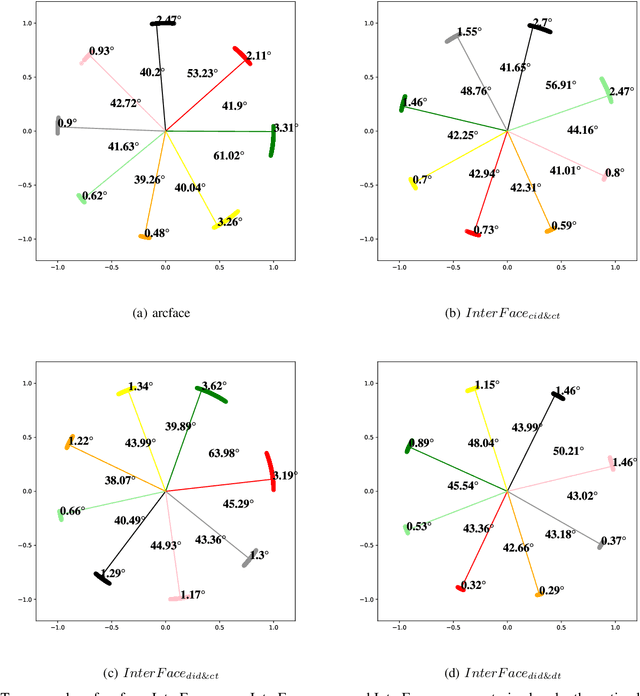


Abstract:In the field of face recognition, it is always a hot research topic to improve the loss solution to make the face features extracted by the network have greater discriminative power. Research works in recent years has improved the discriminative power of the face model by normalizing softmax to the cosine space step by step and then adding a fixed penalty margin to reduce the intra-class distance to increase the inter-class distance. Although a great deal of previous work has been done to optimize the boundary penalty to improve the discriminative power of the model, adding a fixed margin penalty to the depth feature and the corresponding weight is not consistent with the pattern of data in the real scenario. To address this issue, in this paper, we propose a novel loss function, InterFace, releasing the constraint of adding a margin penalty only between the depth feature and the corresponding weight to push the separability of classes by adding corresponding margin penalties between the depth features and all weights. To illustrate the advantages of InterFace over a fixed penalty margin, we explained geometrically and comparisons on a set of mainstream benchmarks. From a wider perspective, our InterFace has advanced the state-of-the-art face recognition performance on five out of thirteen mainstream benchmarks. All training codes, pre-trained models, and training logs, are publicly released \footnote{$https://github.com/iamsangmeng/InterFace$}.
Hybrid Multisource Feature Fusion for the Text Clustering
Aug 24, 2021
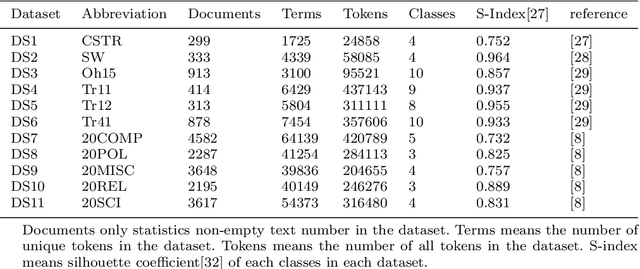
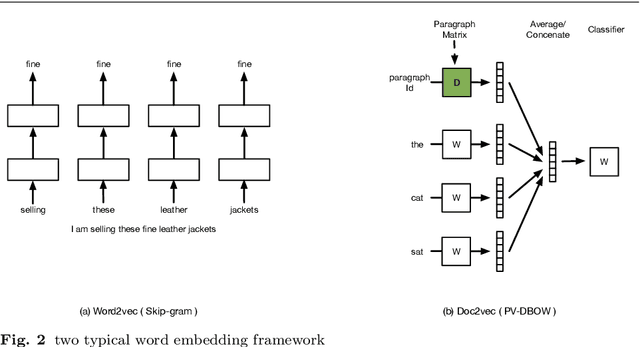

Abstract:The text clustering technique is an unsupervised text mining method which are used to partition a huge amount of text documents into groups. It has been reported that text clustering algorithms are hard to achieve better performance than supervised methods and their clustering performance is highly dependent on the picked text features. Currently, there are many different types of text feature generation algorithms, each of which extracts text features from some specific aspects, such as VSM and distributed word embedding, thus seeking a new way of obtaining features as complete as possible from the corpus is the key to enhance the clustering effects. In this paper, we present a hybrid multisource feature fusion (HMFF) framework comprising three components, feature representation of multimodel, mutual similarity matrices and feature fusion, in which we construct mutual similarity matrices for each feature source and fuse discriminative features from mutual similarity matrices by reducing dimensionality to generate HMFF features, then k-means clustering algorithm could be configured to partition input samples into groups. The experimental tests show our HMFF framework outperforms other recently published algorithms on 7 of 11 public benchmark datasets and has the leading performance on the rest 4 benchmark datasets as well. At last, we compare HMFF framework with those competitors on a COVID-19 dataset from the wild with the unknown cluster count, which shows the clusters generated by HMFF framework partition those similar samples much closer.
Waveform Design for Joint Sensing and Communications in the Terahertz Band
Jun 03, 2021
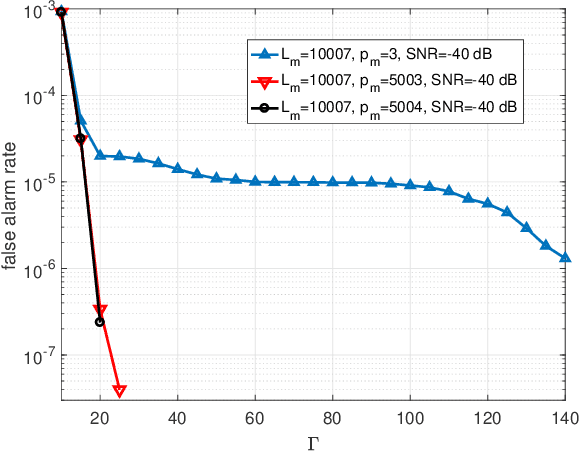
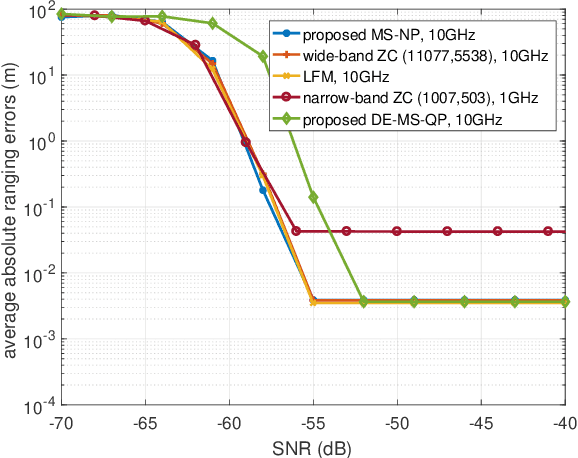
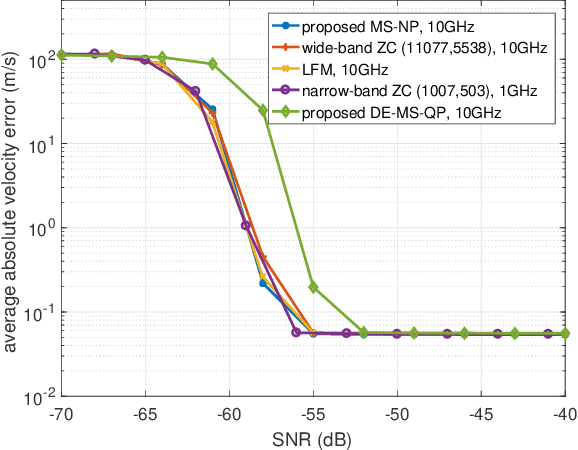
Abstract:The convergence of radar sensing and communication applications in the terahertz (THz) band has been envisioned as a promising technology, since it incorporates terabit-per-second (Tbps) data transmission and mm-level radar sensing in a spectrum- and cost-efficient manner, by sharing both the frequency and hardware resources. However, the joint THz radar and communication (JRC) system faces considerable challenges, due to the peculiarities of the THz channel and front ends. To this end, the waveform design for THz-JRC systems with ultra-broad bandwidth is investigated in this paper. Firstly, by considering THz-JRC systems based on the co-existence concept, where both functions operate in a time-domain duplex (TDD) manner, a novel multi-subband quasi-perfect (MS-QP) sequence, composed of multiple Zadoff-Chu (ZC) perfect subsequences on different subbands, is proposed for target sensing, which achieves accurate target ranging and velocity estimation, whilst only requiring cost-efficient low-rate analog-to-digital converters (A/Ds) for sequence detection. Furthermore, the root index of each ZC subsequence of the MS-QP sequence is designed to eliminate the influence of doppler shift on the THz radar sensing. Finally, a data-embedded MS-QP (DE-MS-QP) waveform is constructed through time-domain extension of the MS-QP sequence, generating null frequency points on each subband for data transmission. Unlike the THz-JRC system in TDD manner, the proposed DE-MS-QP waveform enables simultaneous interference-free sensing and communication, whilst inheriting all the merits from MS-QP sequences. Numerical results validate the superiority of the proposed waveforms in terms of sensing performance, hardware cost and flexible resource allocation over their conventional counterparts.
 Add to Chrome
Add to Chrome Add to Firefox
Add to Firefox Add to Edge
Add to Edge